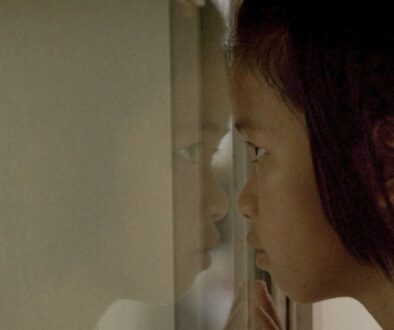Film Review: Loving Vincent
Reviewed by S.M. Chen | 13 May 2018 |
It seems a truism that society often does not recognize the truly gifted: the revolutionaries, the visionaries, the geniuses. It is only after they are gone that they are appreciated.
So it was with Vincent van Gogh who, during his relatively short life, sold only 1 painting (although his output numbered over 800).
Since the 1920s he has been recognized as a pre-eminent artist, and his works sell for millions.
He predicted he would not be remembered as an artist. Posterity has proved him wrong, (as it also has Abraham Lincoln who in his Gettysburg Address, he said the world would “little note nor long remember what was said” there, but it has not forgotten; the Address is secure in the canon of memorable Presidential speeches).
Parts of Van Gogh’s life make ideal fodder for a screenplay: his genius, his madness (were the two intertwined?), his mysterious death from gunshot.
Which recalls this comment by pianist Oscar Levant: “There is a fine line between genius and insanity; I have crossed that line”.
Husband and wife team Hugh Welchman (British) and Dorota Kobiela (Polish) directed a 2017 experimental animated biographical drama about the life of van Gogh, in particular the circumstances of his death.
A young man comes to the last hometown of van Gogh to deliver his final letter and ends up investigating the final days of the tormented artist. For the film, 124 artists over a period of 5 years painstakingly recreated 64,500 paintings, often spending 9-10 hours/day in the process. Every frame of the film contains one of 120 van Gogh works.
The opening shot, that of a night café below a starry night, required 1250 frames and 625 paintings created by 3 artists, working for over 6 months. In an interview, Welchman commented: “We have definitely invented the slowest form of filmmaking ever devised in 120 years.”
Above all, this effort seems to be a labor of love. And the end result is a sumptuous visual feast, a monumental achievement.
An unofficial Facebook trailer attracted 100 million views.
Some film reviewers have faulted the plot, which is necessarily inconclusive as regards his death. One actor (Saorise Ronan as Marguerite Gachet) tellingly asks, “You want to know about his death. What do you know of his life?”
Welchman does raise questions about van Gogh’s death thusly: Why would he commit suicide when he was on the verge of a perhaps major breakthrough? He had been struggling for 8 years.Then, 6 weeks before his shooting, well-known Impressionist Claude Monet had praised him as “most exciting new artist.”
But who knows what crooked paths his tortured soul led him down?
This much we do know: Born in 1853 in the Netherlands to a minister father, one of 6 children, he grew up educated, Protestant, and financially comfortable.
Perhaps unfortunately, he was given the same name as an earlier sibling who had died. As a boy, Vincent would pass a grave bearing an inscription of his own name. Psychoanalysts have had a heyday.
Vincent was a strange child. He had a strong affinity for nature, and would often take long (10 km) walks, sometimes with younger brother Theo, with whom he would have a lifetime bond.
At age 11, he was taken to a boarding school about 30 km from home. His parents drove away in a yellow car. His happiness receded with them.
12 years later, he would write that he felt “totally alienated” at that time.
The color yellow was to figure prominently in his future art.
At age 19 he went to London, but quickly became disenchanted with the commercialization he witnessed of art. What interested him were love, religion, and passion. The blood of a romantic coursed through his veins. He fell in love with the daughter of the owner of the boarding house wherein he lodged. She rejected him; she was already engaged to another.
Turning to religion, he decided, at age 23, that he would become a preacher. He began to minister to coal miners and to draw. But he also became something of an ascetic. He slept on the ground, ripped up shirts to make bandages for the miners, and gave cheese to mice. The Church viewed him with, at first, suspicion, then as a fanatic.
At age 27, he abandoned the ministry that seemed to have given up on him sometime before.
In Brussels, he enrolled in an academy of art. Teachers doubted his ability and did not encourage him. He soon left.
A relative by marriage who was an artist introduced him to oils. He made his first oil painting at age 28.
His move to Antwerp was not a good one. He became a drunkard and alcoholic. A part of him would ever remain so. He frequented brothels and contracted the dreaded disease for which, at that time, there was no cure: syphilis. He was given only a few years to live.
Meanwhile, Theo had become a large art dealer in Paris. Vincent moved to Paris in 1886. He was 33. There, living in Theo’s apartment, his health improved. He was introduced to the vibrant colors of the Impressionists and inspired by Japanese prints. He started signing his works: “Vincent.” But Paris was gray, and he longed for countryside color.
At age 35, he left Paris and stopped in the town of Arles, in the south of France. Its brightness did wonders for his spirit. He settled in a ‘big’ yellow house and wrote, among other artists, Paul Gauguin, inviting him to join him.
In October 1888, Gauguin arrived. The two lived in one room and painted, but their approach to art differed. Paint texture didn’t interest Gauguin. “I detest manipulated brushwork,” he said.
They grew increasingly rancorous. Van Gogh drank absinthe. Arguments followed. Gauguin left in December, after Vincent amputated an ear lobe. Was it a gift to a prostitute? We can only speculate.
He was committed (at first involuntarily, later of his own accord) to an asylum, St. Remy de Provence. He would spend a year there. He did not do well. Hallucinating at times, he tried to poison himself by drinking turpentine and eating paint. Those materials had to be removed for his safety.
Upon discharge, Theo set him up in Auberge. “Wheatfield with Crows” was his last work. The ominous blackbirds contained therein may have been a harbinger of what was to come.
The next day, he staggered back to his room, in agony from a gunshot wound to the abdomen. He lingered for 2 days before succumbing. Before he passed, he asked that authorities not accuse anyone else of the shooting.
In 2011, 60 Minutes ran a segment which raised suspicion that Van Gogh did not commit suicide, but, rather, was shot (either accidentally or otherwise) by a couple boys who had taunted and teased him. If guilty, their secret died with them.
At his funeral, some of his paintings were distributed to attendees. The hotel owner later sold his for 10 francs to passing American tourists.
Perhaps as expected, the soundtrack of Loving Vincent includes the lovely 1972 homage by singer Don McLean.
Here’s a link:
As McLean wrote in “Starry Starry Night,” perhaps the world was not meant (maybe never would be) for one as beautiful as him.
A couple thoughts came during the preparation of this essay.
One is the importance of a friend. It seems that the one constant during van Gogh’s life was his younger brother Theo. He was more than a friend. He was a confidante, someone in whom Vincent could confide his thoughts, his hopes, his dreams. Theo stood by Vincent throughout his troubled life and believed in him when others didn’t. Theo took him in in Paris, bought the only painting Vincent sold during his lifetime. Supported him financially and emotionally. Hundreds of letters passed between them. Vincent did not keep letters from Theo, but Theo kept those from Vincent. Some are preserved in the van Gogh museum (founded in 1973) in Amsterdam. Without them we would know much less about Vincent’s life.
It is said one is the loneliest number. It may have seemed at times that Vincent was alone (he writes of that loneliness in his letters), but he always had Theo.
Theo died at age 33, within 6 months of the passing of Vincent. They are buried side by side, together in death as they were in life. As troubled and tormented a life Vincent had, how much worse might it have been without Theo? It may be reasonably argued that without Theo, Vincent might not have painted as he did, leaving hundreds of pieces of art for our enjoyment and wonder.
The other thought that occurred is the possible nobility of van Gogh at the end of his life. When he urged authorities not to blame anyone else for his shooting death, his request seems cryptic. Did he mean to imply no one else was responsible, or were others responsible and he wanted to let them off the hook, take on himself what they might have done? It may be we will never know for sure. This seems a cold case before that term crept its way into our vernacular.
Regardless, a couple of millennia ago, Someone else let us off the hook. He died that we might live. An innocent Man, He took the punishment we justifiably deserved. He taught, “Greater love hath no man than this – than a man lay down his life…” After a life of service, He laid down that life, dying in one of the cruelest ways imaginable. For that act we can only ever be grateful.
The ultimate destiny of van Gogh is unknown to us, but, should he find himself in a place more glorious than any he experienced on Earth, with a vivid palette that never needs replenishing, and an intact ear, art lovers among us will have occasion to rejoice. If, with a tormented soul, he was able to produce works of such beauty, who knows what would flow from his brush from a place of peace?
 S.M. Chen writes from California.
S.M. Chen writes from California.




